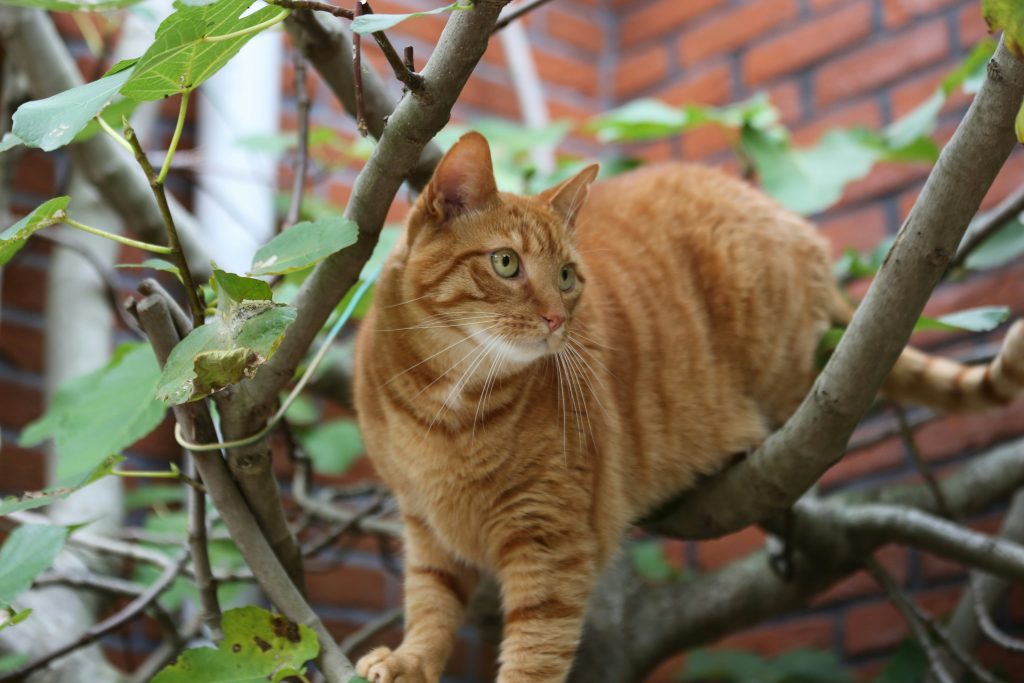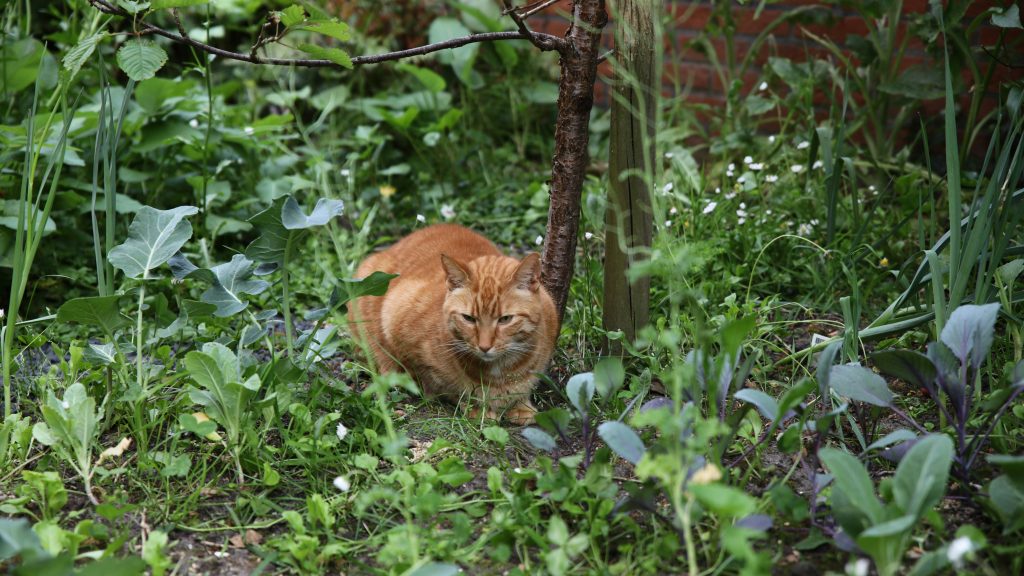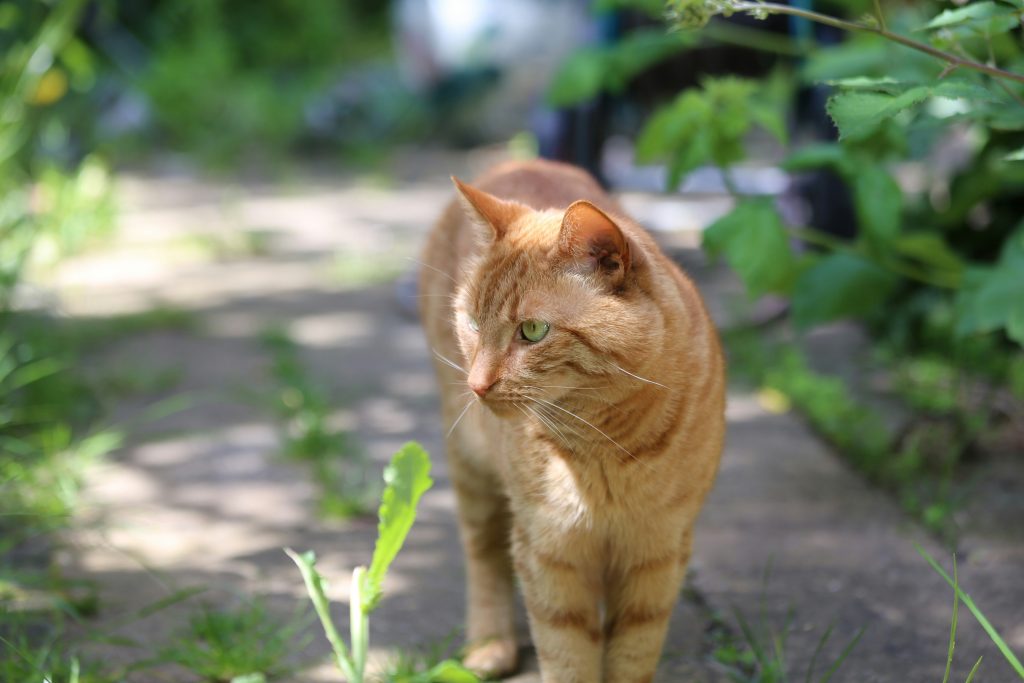Table of Contents
Keeping your cat out of certain areas can be challenging, but with the right strategies, it’s entirely achievable. Continue reading to discover more about these methods and others, including positive reinforcement and how to address unwanted scratching habits. These insights will guide you in creating a harmonious living space for you and your pet. Don’t let this challenge cause any more sleepless nights; explore our helpful tips to keep a cat out of a room effectively.
Understanding Feline Behavior
Understanding why your cat behaves a certain way is crucial when trying to keep them out of specific areas in your home. Cats are creatures of habit and curiosity and often explore to satisfy their innate instincts. By recognizing these behaviors, you can better tailor your strategies to prevent unwanted access. For example, acknowledging that a cat may seek out a room for its warmth or quietness can lead you to provide alternative cozy spots elsewhere.
A cat’s territorial nature also influences its behavior. It may view a room as part of its domain and resist being excluded. Understanding this can help you find ways to make other areas more appealing, reducing your desire to enter off-limits spaces. Addressing these behavioral aspects is the first step toward effectively managing your cat’s access to different parts of your home.
Why Cats Enter Forbidden Spaces
Cats often enter spaces off-limits out of sheer curiosity or to seek comfort. They are natural explorers and may be drawn to a room by the smells, sounds, or sights that promise new experiences. If a cat notices that a particular area is often closed off, their curiosity might be piqued even further, leading them to find creative ways to gain entry.
The Role of Territory and Curiosity
The interplay of territory and curiosity is a significant factor in a cat’s behavior. Cats have a strong territorial instinct, marking spaces they consider theirs through scent glands on their paws and faces. When you try to keep a cat out of a room, it’s not just their curiosity that drives them; it’s also their desire to patrol and maintain control over their perceived territory.

Physical Barriers and Entry Prevention
Physical barriers are a straightforward solution to prevent cats from entering certain areas. A pet gate is a practical tool that can block access while allowing visibility and airflow. It’s essential to choose a gate that is tall enough to prevent a cat from jumping over and sturdy enough that it can’t be knocked down.
1. Ensuring a Closed Door Policy
Maintaining a closed-door policy is one of the simplest physical barriers to keeping your cat out of a room. Simply closing the door can act as a clear boundary that most cats will understand over time. This method requires consistency to reinforce the message that the space is off-limits, helping to keep your cat out reliably and without confusion.
2. Pet Gates and Creative Dividers
Using pet gates and creative dividers can prevent your cat from accessing forbidden areas. These barriers can be especially useful in homes without doors or where airflow between rooms is necessary. By selecting a pet gate to prevent a cat from jumping over, you can maintain an open and inviting atmosphere while enforcing boundaries.
DIY Solutions for Blocking Access
DIY blocking access options can be objective and personalized for those who prefer hands-on solutions. Homemade barriers like repurposed furniture or baby gates can be customized to fit your space and your cat’s abilities. Additionally, these solutions can often be crafted from materials you already have at home, making them an eco-friendly choice.
Commercial Barriers to Consider
When DIY solutions aren’t suitable, commercial barriers designed to curb unwanted behaviors can be an excellent investment. Products like vinegar spray can discourage cats from approaching certain areas without harming them. These ready-made options are often tested for safety and effectiveness, providing pet owners with peace of mind.
3. Creating a Buffer Zone
Creating a buffer zone can be an effective strategy for keeping your cat from being too interested in a room it’s not allowed in. This space is a neutral area where your cat can feel comfortable and less fixated on the inaccessible room. The buffer zone can include elements that fulfill your cat’s needs, such as their bed or toys, redirecting their attention away from the off-limits area.
The Importance of a Transitional Space
A transitional space, or buffer zone, can prevent your cat from feeling the urge to scratch at the door or force their way into a restricted room. By providing an inviting area with amenities like a litter box and comfortable bedding, your cat is less likely to become fixated on the barrier and more likely to enjoy the space they’re allowed to inhabit.
How to Set up an Effective Buffer Zone
Setting up an adequate buffer zone to keep your cat out involves making the allowed space attractive and fulfilling. Ensure it includes all your cat’s essentials, such as food, water, and a litter box. Incorporate their favorite toys and comfortable resting places to make it a preferred hangout spot, reducing their interest in the room they’re not allowed in.
Deterrents and Discouragement
In addition to physical barriers, deterrents can be employed to discourage unwanted behaviors. Vinegar spray, for example, can be an effective repellent when used in moderation around a room’s entryway. These types of deterrents can serve as a gentle reminder to your cat that it should stay away from certain areas, reinforcing the boundaries you’ve set.
4. Utilizing Cat Repellent Options
Cat-repellent options can significantly contribute to your strategy for keeping cats out of unwanted areas. These products are designed to safely and effectively deter cats from certain behaviors or locations, using scents or textures that are unappealing to them without causing harm.
Natural Aversions: Scents That Cats Dislike
Consider using scents that cats dislike to naturally keep them away from specific areas. Many essential oils, like lavender, lemon, or eucalyptus, can be natural repellents. However, using them safely for cats is crucial, as some essential oils can be toxic if not used correctly. Always research and verify the safety of any scent-based deterrent before use.

5. Making the Room Undesirable
To make a room less appealing to your feline friend, remove any tasty treat or cozy sleeping spot that might attract them. Cats are naturally drawn to comfort and food, so ensuring these enticements are unavailable in the off-limits area can be a significant deterrent. Moreover, providing the room does not contain any of your cat’s favorite toys or belongings will further reduce its allure.
Altering Textures and Surfaces
Cats are sensitive to textures and may be discouraged from entering a room if the surfaces are unappealing to their paws. Consider covering furniture with materials like aluminum foil or double-sided tape that cats find uncomfortable to walk on. Floor mats with plastic spikes can also be practical, as they are designed to be unpleasant for cats to step on, thus creating a physical deterrent for entry.
Removing Attractive Stimuli
Eliminate elements that might attract your cat to the room, such as bird feeders visible through windows or small spaces where they might hide. Keep blinds closed or use opaque window films to block enticing views. Additionally, ensure that no lingering scents from catnip or other treats remain, as these can be powerful lures for a curious cat seeking adventure and novelty.
6. Distraction Techniques
When trying to keep your cat out of a room, offer alternative activities to keep them occupied. Engage their interest with new toys or interactive play in other parts of the house. By providing enrichment in acceptable areas, you reduce the likelihood of your cat attempting to enter forbidden spaces due to boredom or lack of stimulation.
Toys and Play Areas in Other Rooms
Create inviting play areas in other parts of the house to entice your cat away from off-limits rooms. Use a variety of toys, such as puzzle feeders, balls, or laser pointers, to engage their hunting instincts. Setting up cat trees or designated scratching posts in these areas can also encourage your cat to spend time there, reinforcing the idea that other spaces are more rewarding.
7. Positive Reinforcement Strategies
When training your cat to stay out of certain areas, focus on positive reinforcement rather than punishing your cat for transgressions. Reward good behavior with treats, affection, or playtime when they stay in designated areas. This approach helps to build a positive association with the permitted spaces while gently discouraging interest in the restricted room.
8. Addressing Scratching Habits
If your cat is scratching at the door to gain access, it’s essential to address this behavior directly. Add double-sided tape or a scratch deterrent spray to the door to discourage scratching. Additionally, you can provide an alternative scratching surface nearby. Ignoring your cat when they scratch at the door can also be a powerful strategy, as it removes the attention they may be seeking.
Providing Acceptable Scratching Alternatives
Understand that when your cat seeks to scratch, it’s a natural behavior for claw maintenance and stress relief. Offer various scratching posts or pads made from different materials, like sisal or cardboard, and in multiple orientations, such as vertical or horizontal. These alternatives can redirect your cat’s scratching instincts away from the door and towards a more appropriate outlet.
9. Consistency Is Key
Maintaining consistency is crucial to effectively keep a cat out of a room, such as a guest room. Cats learn best through routine, so consistently enforcing the rules about restricted areas will help your cat understand the boundaries over time. Avoid sending mixed signals by occasionally allowing access, as this can confuse your cat and undermine your efforts.
Routine and Repetition
Repetition is vital in reinforcing the rules about off-limits areas. Regularly guiding your cat away from restricted rooms and rewarding them for respecting boundaries will help solidify the behavior. Establishing a daily routine that includes playtime and attention in allowed spaces can make adherence to room restrictions a regular part of your cat’s life.
10. Improving Attractiveness of Other Areas
Creating a cat-friendly zone away from the forbidden room can distract your cat from its desire to explore restricted areas. Set up a space with the cat’s favorite toys, comfortable bedding, and scratching posts to keep them engaged. Ensuring this area is always accessible can discourage your cat from seeking other spots. Add cat-repellent options in the off-limits room to make it less appealing. For example, a scent that cats dislike or aluminum foil on surfaces can keep cats at bay.
If your family member has allergies, and you need to limit cat access to a room, improve another area with hypoallergenic bedding and frequent cleaning. An alternative barrier, like a pet gate or creative divider, can limit access if a room has no door. A deterrent at the door, such as sticky tape or a motion detector that picks up movement and emits a loud noise or a spray inaudible to humans, can also help train your cat to stay away.
11. Eliminating Pet Odors to Reduce Lure
Cats are drawn to familiar scents, and lingering pet odors can make a forbidden room more attractive. Thoroughly cleaning the area to remove these odors can reduce the room’s allure. Use enzymatic cleaners that break down the smell of urine or other pet-related scents, ensuring that the space does not trigger your cat’s curiosity or territorial instincts.
Regularly washing bedding, curtains, and any fabric-holding pet odors can further diminish the attraction to the forbidden room. Maintaining a neutral-smelling environment can help curb your cat’s interest in exploring and marking off-limits areas.

Common Concerns and Solutions
One common concern for cat owners is that restricting access to certain rooms might cause stress or behavioral issues in their pets. It’s important to ensure that your cat has plenty of space and enrichment in the areas it can explore. Also, consider gradually introducing room restrictions to minimize anxiety.
Another issue is the potential for a cat to feel isolated if kept out of rooms where the family spends a lot of time. To prevent this, spend quality time with your cat in shared spaces and provide plenty of affection and play to reinforce the bond between you and your pet.
How to Handle a Room Without a Door
Creative solutions are required to keep your cat out of a room without a door. Consider installing a temporary barrier, such as a baby gate or a freestanding pet fence. Alternatively, set up a curtain or a screen to block the entrance. These measures can help maintain the visual and physical boundaries to keep your cat out of the space.
The Ethics of Restricting Access to a Room
Restricting a cat’s access to certain rooms raises ethical considerations. It’s crucial to balance a cat’s need for exploration with the reasons for limiting access, such as safety or protecting valuable items. Providing a stimulating environment with ample space for play and rest elsewhere ensures that such restrictions are fair and do not negatively impact your cat’s well-being.
The Bigger Picture in Feline Management
Managing a cat’s environment is about more than just setting boundaries; it’s about creating a harmonious living space for everyone. Recognizing the need for specific cat-free areas while providing ample and attractive alternatives can lead to a happier and more balanced home life for pets and their owners.
Understanding the Need for Boundaries With Your Cat
Setting boundaries is a crucial aspect of pet ownership. It helps establish rules that keep the cat and the household members comfortable. Whether it’s to protect certain family members with allergies or preserve a space’s integrity, boundaries can help maintain a stress-free home environment.
Long-Term Benefits of Setting Room Restrictions
Implementing room restrictions can provide long-term benefits for both the cat and the household. It gives the cat plenty of space to feel safe and in control while preserving the home’s cleanliness and order. Consistent boundaries can also prevent behavioral issues and reduce the risk of damage to restricted areas.
How to Keep a Cat Out of a Room: A Harmonious Approach to Feline Boundaries
Maintaining a harmonious home requires understanding that a cat likes freedom, yet boundaries are sometimes necessary for safety and sanity. Successfully keeping a cat out of a room often involves a combination of methods, such as giving them appealing alternatives like cat toys in other areas or access to a sunny window where your cat wakes to the morning light.
Remember, creating a space with hiding spaces and comfort away from the forbidden door to the room will make the whole process smoother. If needed, consultation with cat behaviorists can offer insights tailored to your unique situation. In conclusion, balancing restriction with enrichment is key to a peaceful coexistence with your feline friend.

Hi, I’m Zoey, a devoted mom to two charming Siamese cats. My passion lies in assisting fellow pet owners in providing optimal care for their cats. On CatsEuphoria, I share practical tips and relatable stories, inviting you to join me in appreciating the authentic bond between humans and our beloved feline companions.




